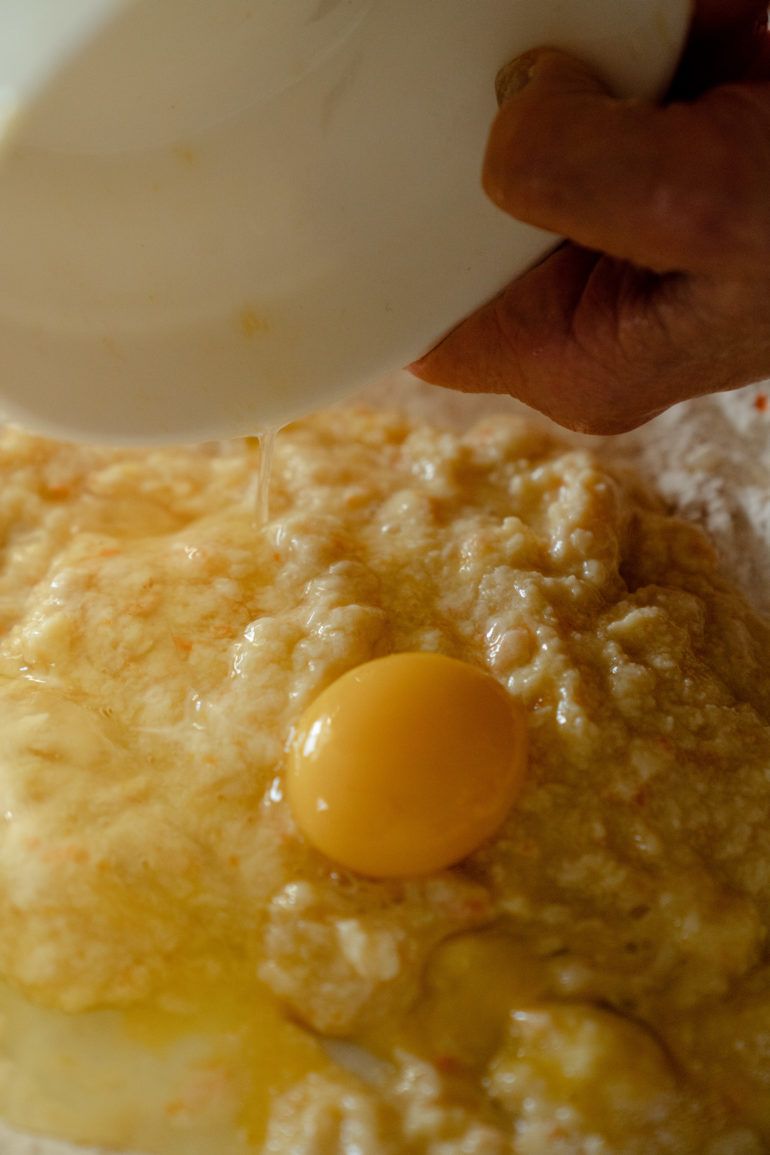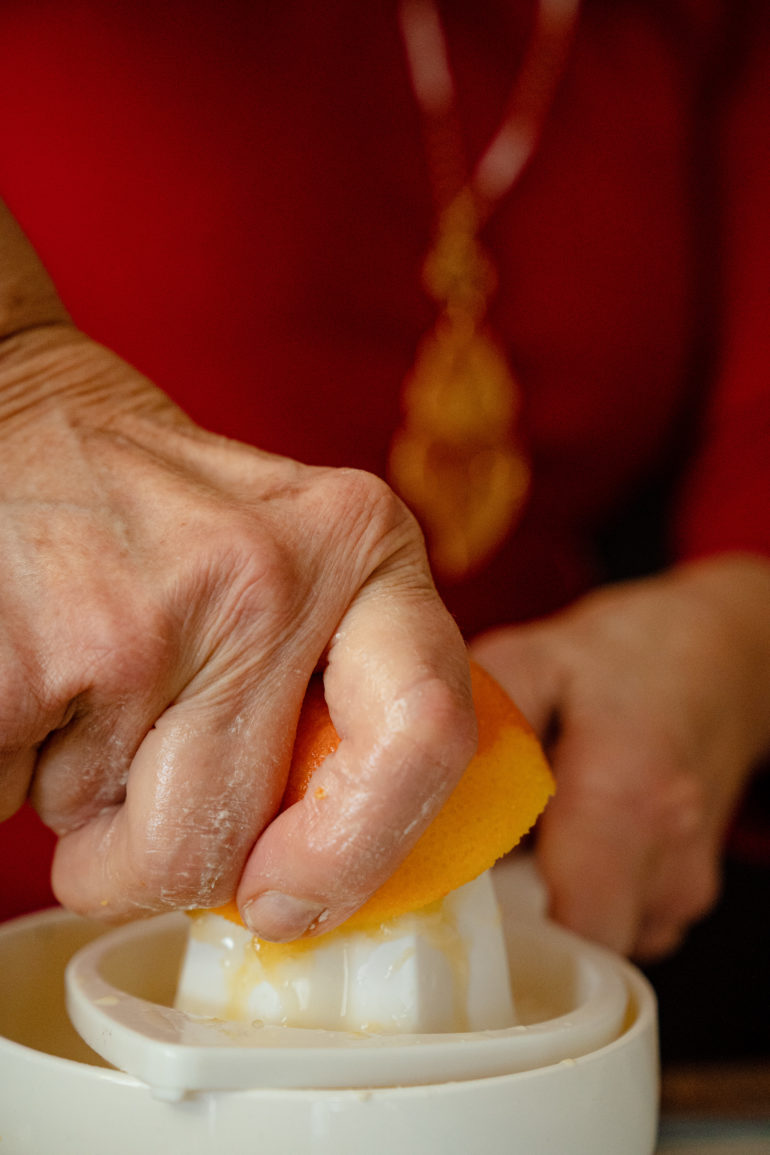No Portuguese Christmas is complete without the famous Bolo Rei on the table. Literally translating to “king-cake,” it’s name is derived from it’s round shape, shiny crust and colourful fruit, resembling a crown adorned with jewels. It is eaten throughout the Christmas season which ends on Three King’s Day, January 6.
Growing up my mom was always the one who took on the task of making the Bolo Rei and she continues to do so year after year, baking cakes for each of her sibling’s households. I asked her if this holiday recipe came from my grandmother, but sadly, no. When she was growing up in Portugal, people typically bought their Bolo Rei from the bakery due to the immense amount of work that goes into making it. The dough requires extensive kneading and rolling to create the perfect shape, texture and of course, taste. The toppings are carefully selected, then added right before baking, to not only add taste but also make it unignorable on the table. The cake resembles a sweet, dense bread filled with nuts and dried fruits then topped with candied fruit before it is glazed and sprinkled with powdered sugar.
Over the years, my mom has tweaked and adjusted her recipe to find that perfect balance, which is unmatched by any bakery bought cake. Despite all the time and effort needed to make a Bolo Rei, my mom takes great pride in baking and perfecting this treat each year, for each family gathering over the holiday season.
There are many legends and symbols that surround the Bolo-Rei. Many say that it represents the gifts that the Magi gave to baby Jesus when he was born: the glazed crust symbolizes the gold, the candied and dried fruit symbolizes the myrrh and the aroma symbolizes the incense. Traditionally, the Bolo Rei was made with a whole fava bean and a trinket hidden in the cake—whoever found the trinket would have good luck for the next year, and whoever found the bean would buy the Bolo Rei the following year – unless of course, your mãe or avó is the designated baker.
Bolo Rei seems to be one of those many Christmas traditions that is taken for granted but the meal is incomplete without it. With it’s shiny glaze and red and green candied fruit, it resembles a Christmas wreath—it is the centre piece. So many Portuguese traditions are rooted in food and our celebrations just would not feel the same without those favourites. Although we all know a Portuguese holiday table, or any family meal for that matter, will be filled with more food than we could ever eat, we’d still miss the famous Bolo Rei if it wasn’t there.
Bolo Rei
MAKES 2 CAKES
INGREDIENTS
Cake
- 40 g baker’s yeast
- warm water
- 250 g all purpose flour
- 150 g butter (room temperature)
- 3 eggs
- 175 g sugar
- 1 teaspoon salt
- 1 orange (finely grated rind and juice)
- 500 g all purpose flour
- 1 egg
- powdered sugar
Dry fruits
- 1 dl port wine or brandy
- 75 g raisins
- 75 g walnuts
- 75 g pine nuts
- 75 g blanched slivered almonds
- 75 g chopped candied fruits
Candied fruit to decorate the cake
- 65 g pumpkin jelly
- 50 g candied tangerine or orange
- 2 candied figs
- 2 candied pears
- 50 g candied cherries
INSTRUCTIONS
- Add the chopped candied fruit, raisins and port wine or brandy to a small bowl. Leave the fruit to soak up the liquid while you prepare the dough.
- In another bowl, mix together the yeast, the 250 g of flour and enough warm water to create a smooth dough. Roll it into a ball, cover and set aside in a warm place to rise for about 30 minutes or until it has doubled in size.
- Once the yeast has risen, Pour the 500g of flour on a pastry board (or any flat surface), and open a cavity in the centre. Add the sugar, butter, salt, orange rind and orange juice, and knead thoroughly. Do not mix in the flour at this point.
- After these elements are well kneaded, add the yeast dough to it. Knead them together and add eggs one by one, always kneading.
- Drain the chopped fruits and add the liquid to the batter.
- Next, start combining the flour ring to your dough, and continue kneeing until the dough no longer sticks to the working surface.
- Add the drained fruits and nuts to the dough and combine well.
- Sprinkle the dough with flour, make a ball and place it in a container. Cover the container with a clean, warm cloth leave it in a warm, draft-free place. Allow to rise for 1 1/2 -2 hours or until doubled in volume
- Divide dough into two parts and make a ball from each part.
- Then make a hole in the middle of each cake and then widen until it forms an even ring. Put the cakes on a tray and allow them to rise until they double in size.
- Preheat the oven to 350º.
- Baste with beaten egg.
- Garnish top with candied fruit pieces interspersed with mounds of powdered sugar. The fruits should be placed so as to make the cakes as colourful as possible.
- Bake in hot oven at 350º for 35 to 45 minutes. Remove them from the oven. While still warm glaze with pumpkin jelly,
- Notes: If you want to hide a trinket or a fava bean in the cake, wrap them individually in parchment paper first. Before baking, make a small incision on the inside, insert the trinket or fava bean, then smooth the cake. For safety reasons, we do not recommend adding these things.
- Bom apetite
Notes: If you want to hide a trinket or a fava bean in the cake, wrap them individually in parchment paper first. Before baking, make a small incision on the inside, insert the trinket or fava bean, then smooth the cake. For safety reasons, we do not recommend adding these things.
Bom apetite
WORDS: DULCE MATOS
PHOTOS: NOAH GANHÃO



















